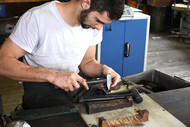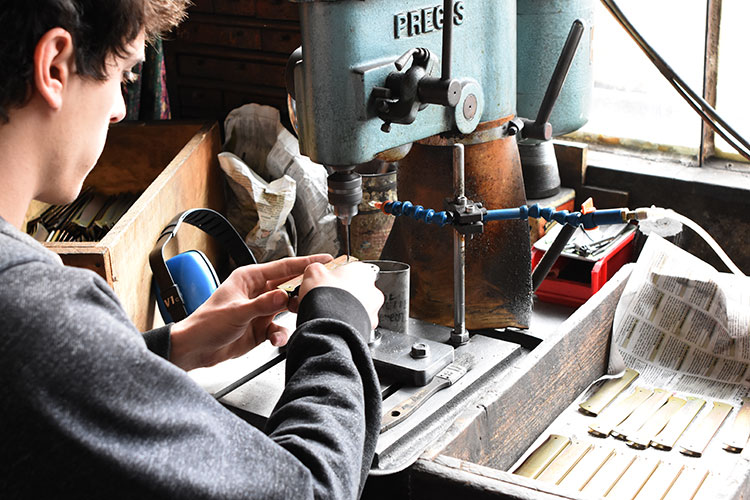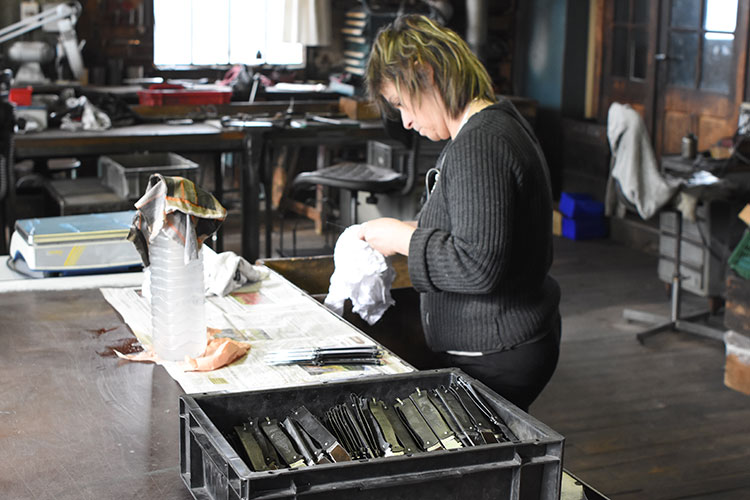
Japanese Garden Tools Vs. American: What’s the Difference?
You may have seen Japanese gardening tools popping up more in stores and online. Sure, they’re… Read More

Today we’re showing you a behind-the-scenes look at how one of our favorite knives, the Douk-Douk, is made. First created by Gaspard Cognet in 1929, this knife has been a favorite of adventurers, craftsmen and miscreants around the world. This Coutelier (knifemaker’s workshop) is located on the side of a hill at the foot of the Forez mountains in southern France. The photo shows the workshop and the fantastic views from its position. The Cognet family also lives here, and they are an integral part of a larger community that has a long history of making high-quality knives. The river that runs through the city, la Durolle, provided its craftsmen with abundant energy to produce cutlery for the excellent chefs of the region, and indeed the world.
Note: since the knives we source from this region are hand-made and/or vintage, they are available in very limited quantities. There is no guarantee we will carry this particular knife at the time of reading this. Therefore, we invite you to check out currently available cutlery from Thiers and everyday carry knives similar to the Douk-Douk.
This old-school, belt-driven machine cuts and folds the stock into a handle. Designed in-house, it actually performs several tasks, including imprinting the Douk-Douk motif into the knife case. In the bottom picture you can see the die, which features a Melanesian character. Since most of the work is done with finely tuned hands, this is one of the only ‘big’ machines in the workshop.
The blades are carefully heat treated to find the right balance of edge retention and hardness for resilience, while still being easy to resharpen. Resharpening is a process which will naturally warp the blade, so each blade is expertly straightened before grinding. For this, Robin, a 4th generation Cognet, uses a specially designed cross-peen hammer. His extensive experience allows him to check the straightness of the spine by sight and feel on the nearby reference plate. This meticulous handwork is repeated in all the subsequent steps on every knife!
From start to finish, each knife undergoes 38 steps, all of which are difficult, despite the seemingly effortless motions of the artisans. Here, a senior member of the team grinds the blade in a moving-wheel grinder. Watch the wheel on the left as it makes minute changes to the blade!

Earlier, you saw the machine that makes the handle/case. That case needs two rivets; one for the blade and another for the bail. This is the drill-press station where those rivet holes are bored. The crafstman is working from the full box on the left and into the empty box on the right

Here is the assembly station for the knives. Notice the pile of springs in the middle of the picture. Seemingly just a simple lever, this is actually a finely tuned part that animates the knife. If you’ve ever operated the blade on a Douk Douk, then you’ve felt the difference in blade tension when opening and closing, or at the midway point where you “pause-and-reposition”. These actions are all controlled by that spring.
Throughout the coutellerie community of this region, the task of assembly and refinement is generally done by one person. However, in this atelier, the refining happens in the next step.

Now that the Douk Douk is assembled, it needs to be “tuned” so that it has just the right tension. In order to develop a productive rhythm, or flow, yet another craftsman does this. Here you see him peening one of the rivets over his anvil. The heavily eroded woodblocks is where he places the open blade, edge down, so that he can access the back of the case for more adjustments. If you own one of these knives, take a close look at the rivet heads to see the facets left by each blow of this man’s hammer!

Remaining in the same room where it is made, the now completed Douk-Douk is thoroughly checked and lightly oiled before packing. We were only able to show you a couple of the 38 steps required to make this knife; however, the biggest takeaway is the value of these knives. It is one of the last great pieces of meticulous craftsmanship — made by a tight-knit group of artisans — that can be bought at a reasonable price.
If you would like to see more behind-the-scenes pictures of knife making from this region, please check out this Laguiole LeFidele folding pocket knife and this exquisite Anchor Knife.

